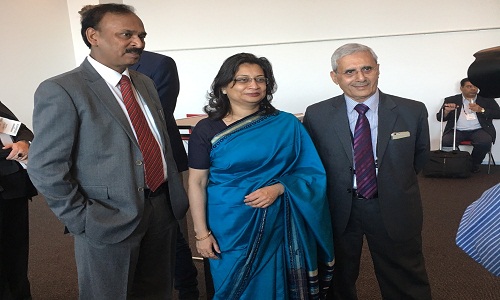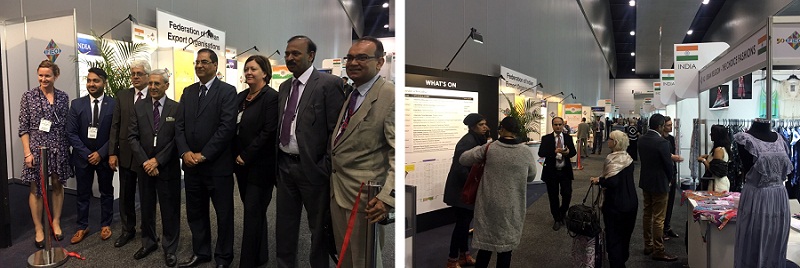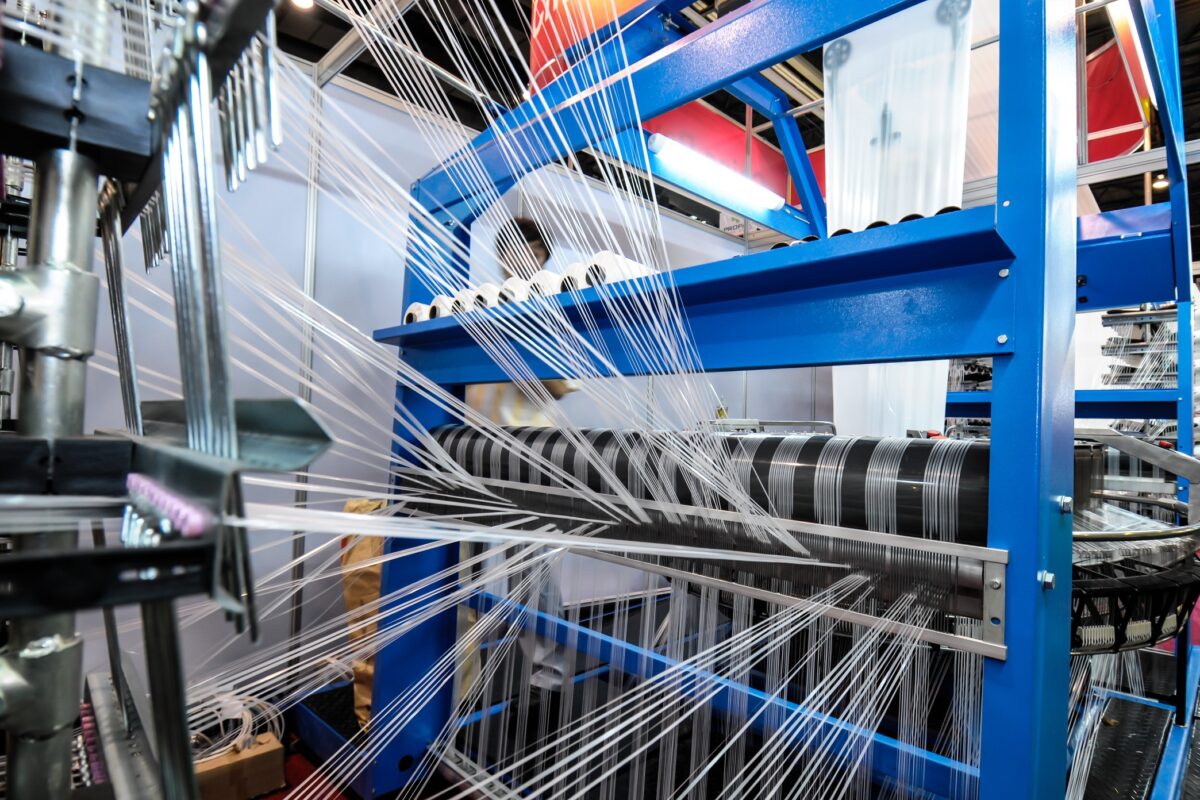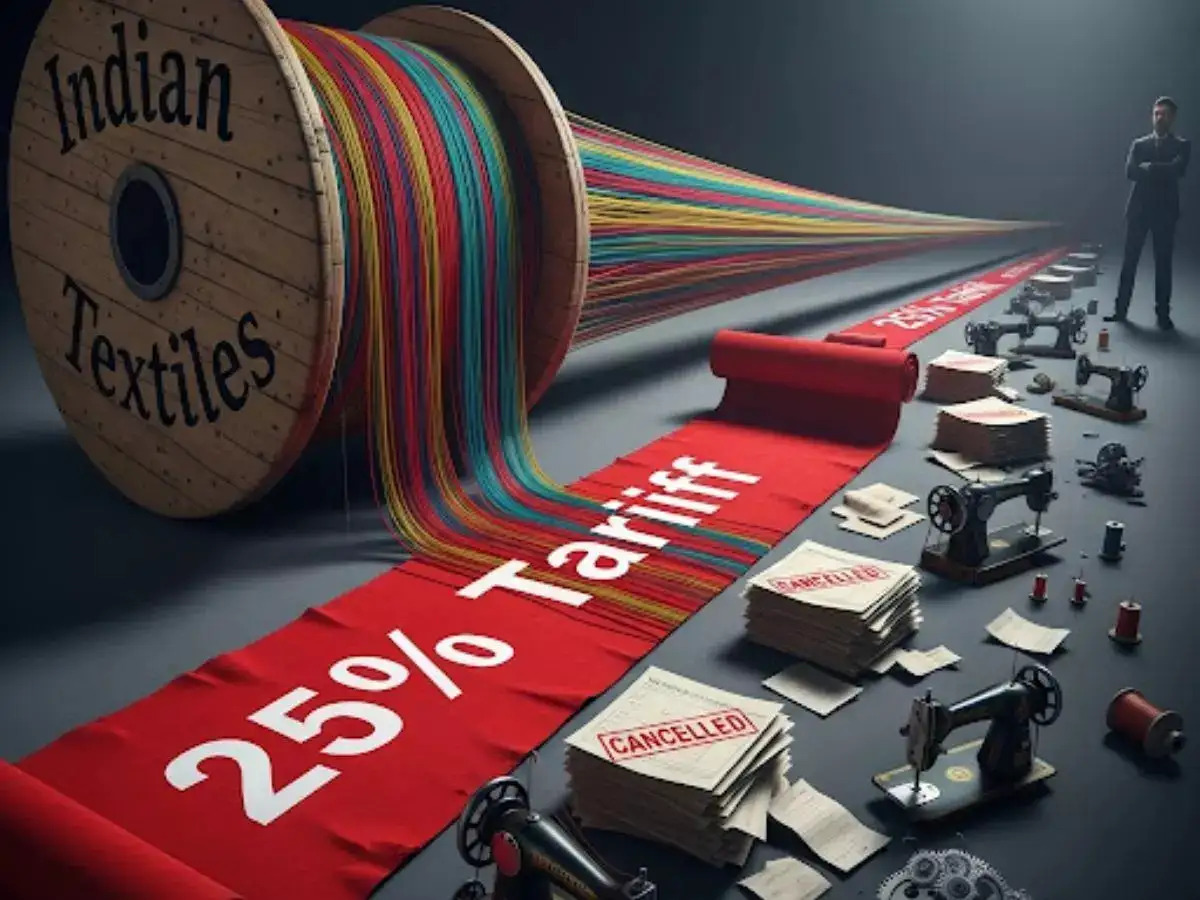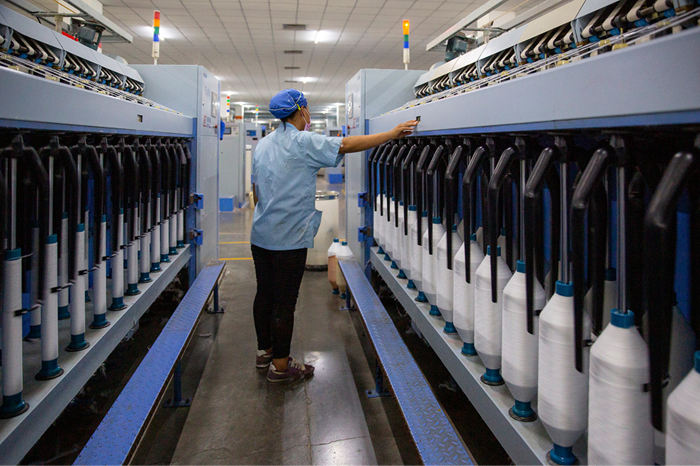FW
Denim Première Vision is changing its location, positioning, dates and managing team. The show recently announced its May 23-24, 2018 edition will take place in Paris’ Parc Floral and the following edition will take place at a new location: In London, at Old Truman Brewery, near Shoreditch in the very heart of East London, in the fashion, art and culture district. The winter edition will also have new dates from December 5-6, 2018.
From now on, Denim Première Vision will be organised alternately in Paris and in a European city with a strong fashion influence. The idea is to encourage closeness with fashion and design markets while presenting the sector with new sources of inspiration. The show will also reorganise its areas and present collections and products in a new, more efficient and contemporary scene to inspire visitors. Fashion tools have been redesigned and will be more instructive. Denim trends area and seminars will offer inspirations, analysis and guidance on the season's trends.
The show’s team is being spruced up: Guglielmo Olearo, international exhibitions director for Première Vision, is also taking over the management of Denim Première Vision. He is replacing Chantal Malingrey, a member of the board who, along with her role as marketing and development director for Première Vision and director of special events will now become the director of the pre-collections show, Blossom Première Vision.
Fabio Adami Dalla Val the show manager says, “The denim market is evolving fast and this show is evolving with it. For this reason we decided it is time it takes place in different cities that could be inspiring for insiders, according to always new trends influencing the denim and fashion markets. We also chose to move the show’s dates forward as is the case of end of May and beginning of December. By those dates on the one side, the supply chain can be ready and present their new full collections, and, on the other side, brands and retailers can place orders and make final adjustments to their collections’ pre- production, according to real market feedback,” he added.
With a planned bankruptcy auction a little over a month away, Los Angeles-based American Apparel is still looking for a buyer that will keep its store doors open. There is hope for its manufacturing and distribution operations but a big question mark remains over the fate of the retailer’s 110 stores. It is hoping, buyers step up to salvage the rest of its business. However, the only deal the cash-strapped company has in hand is from Canada’s Gildan, which is offering about $66 million for the intellectual property, some wholesale inventory and an option on manufacturing and distribution assets.
A plan to improve online selling didn't pay off, and, at a time when shoppers are going online in greater and greater numbers, American Apparel watched its online sales fall. American Apparel began as a wholesale T-shirt business in 1998. But the hoped-for turnaround of the clothing manufacturer and retail chain—which has long grappled with shrinking sales and an outsize store footprint—did not happen.
In the days leading up to the US bankruptcy filing, American Apparel began winding up its affairs in the UK, Ireland, Germany, Spain, Canada, Japan and Australia, part of a foreign sprawl that included 83 stores.
Bangladesh may be the world’s second largest exporter of apparel but it’s per hour earnings from the export of apparel are the lowest in south Asia. The country’s per hour earnings from apparel exports are $0.51 while the amount is $0.55 dollars for Sri Lanka, $0.58 for Pakistan and $1.06 for India. For China it is $2.6.
Bangladesh’s per capita export earnings from apparel which are $126 are also well below China’s at $365 and Vietnam’s at $312. The regional average for South Asia is $70. Though the South Asian region possesses several key advantages in the apparel sector, its share of the global apparel market continues to lag behind China’s, which accounts for 41 per cent of the global market. Still South Asia’s share of the global apparel market increased to 12.3 per cent in 2012 from 7.5 per cent in 2000.
Despite higher labor costs, China is able to attract buyers by offering a wide range of apparel at short lead times, while high productivity limits total costs despite high wages. No country in South Asia has thus far succeeded in offering a comparable package of goods and services.
Yarn Fabric & Accessories Show (YFA) 2016 will be held in New Delhi, November 23 to 26, 2016. It aims to redefine the way fiber, yarn, fabric and apparel accessories are sourced and bring renowned suppliers from these four segments closer to buyers and also offer buyers a one-stop place to source all their requirements. The aim is to bring producers of world class and multiple varieties of value added fibers, yarns, fabrics and garment accessories closer to end-users.
The show is a gateway to foreign companies to enter the India. It is taking place in a region of India, which is one of the biggest Indian hubs for manufacturing textiles and apparel. It attracts companies in the textile value chain from all over India. New Delhi and its surrounding area house several Indian and global apparel brands and hundreds of spinning and weaving units as well as thousands of garment manufacturing units.
Top officials, merchandising and sourcing teams from these companies and brands are expected to attend the show, which will provide exhibitors access to the most exclusive buyers ever seen in any other exhibition of this category.
FIEO, India’s apex trade promotion body set up by the Ministry of Commerce and Industry in India promotes India's international trade. FIEO represents small, medium and large scale exporting units spread on a pan-India basis. Today it boasts of a direct membership of over 22,000 companies. They represent every product and service sector of India.
It has been FIEO's endeavor to promote trade with important international markets in line with the objectives of the Indian commerce ministry and the country as a whole. FIEO has offices all across India.
FIEO is participating at International Sourcing Expo Australia. It is by far the biggest spectacle showing Indian products in Australia. More than 65 Indian companies are participating and showing manufactured goods like apparels, textiles, sports goods, home furnishings, industrial textiles, leather products etc.
In his speech at ISEA, S C Ralhan-President, FIEO said the objective of the Indian participation is to project the image of India as a fast emerging economy in Asia and its attractiveness as a destination for high end manufactured goods. “Australia is India’s largest trading partner in East Asia with a bilateral trade of about 12 billion dollars in 2015-16.India's exports to Australia in 2015-16 registered a growth of 17.29 per cent with the trade balance in favor of Australia. However, the trade is nowhere its potential and there is immense scope for expansion,” he said.
“India and Australia have much to share with one another and we have seen our relationship expanding in many ways over the years, including through increased people to people links. Australia has also placed India at the forefront of its international partnerships. Both the governments recognise that there is a significant potential for further expansion iof co-operation in wide range of areas. The two countries are actively engaged in Regional Comprehensive Economic partnership (RCEP) negotiations to work out most beneficial tariff arrangement between the two countries besides other partners,” he poi nted out.
Denim North America (DNA) is changing the way denim mills present fabric.
So far there has been a move from fabric cards to washed leg panels and finally to full garment presentations but since the mid ’90s there has been no significant change.
DNA is showing the flexibility and diversity of a single base component across multiple fabrics, silhouettes, and a variety of washes…the ability to do more with less. The tool kit contains a sample from each step of the design process – from yarn slub to shade, construction, and wash – so it is possible to visualize many different combinations that the components are capable of producing. DNA is giving this unique insight into the denim development process for the very first time.
Denim North America collaborated with Seattle based manufacturing company Hardmill to produce the hand crafted presentation tools. Hardmill is a maker of simple, traditional, rugged high quality kitchenware and home goods.
For the spring 2018 collection, DNA is leading the way by focusing on sturdy cotton faced twill fabrics, real denim, wearable function, and sustainability.
Denim North America makes rigid and stretch woven, rope yarn dyed, sanforised and finished denim fabrics for apparel and fashion applications.
Bangladesh will set up a jute viscose plant with financial and technical assistance from China. Viscose is a of manmade natural fiber. Products made using jute viscose could bring in three to four times more profits than products made using jute fiber.
Viscose is used in Bangladesh’s spinning mills to produce yarn for making the finest possible fabrics for the readymade garment sector. There is a huge demand for jute-made viscose in Bangladesh. The plant will cut down imports of viscose that Bangladesh has to do every year for its textile and readymade garment sector. Jute viscose has huge export potential.
China has been providing technical and financial support to Bangladesh for revitalising the jute sector. Bangladesh currently has 26 jute mills, which are 60 to 70 years old, and of which 24 mills, which are now in operation, are annually producing 2,08,642 metric tons of jute goods against their original annual production capacity of 3,45,000 metric tons.
Bangladesh will take technical assistance from China for modernizing 24 state-owned jute mills for producing diversified jute goods. Jute is one of the most affordable natural fibers and considered second only to cotton in the amount produced and the variety of uses of vegetable fibers.
The fashion industry revolves around glamorous apparel, celebrities and dazzling runway shows. But it also has a dark side framed by human trafficking, low wages and factories that pollute the environment. While approximately 80 per cent of the world’s garment workers are women, the number of women heading the 15 largest mass-market apparel companies on the Fortune 500 list is zero.
In countries like Bangladesh garment-related global supply chains provide critical jobs and capital that help women workers raise their standard of living and provide for their families. However, these women are also vulnerable in global value chains. Low wages, unsafe working conditions and flexible contracts are prevalent. This is exacerbated by entrenched gender discrimination in everyday life.
In 2014, Cambodia's security forces opened fire on garment workers while they were protesting low pay. It is one in a string of tragedies worldwide that have hit garment workers hard. The broken fashion supply chain system makes trillions in revenue for major brands while paying the workers pennies.
Labor intensive industries, like fashion, are more sensitive to the costs of labor. The race between brands to compete for the lowest costs has driven garment worker wages to the floor.
The rising cost of textile manufacturing is human dignity and human life. They are not measured in profit and loss statements, but the losses are devastating on many levels.
"The International Sourcing Expo (ISEA) opened its doors at the Melbourne Convention & Exhibition Centre from November 15 to 17, 2016. The expo offers an extensive array of apparel, textiles, accessories and footwear and is supposed to be the ultimate destination for sourcing, connecting and learning. The three day show kicked off on a strong note."
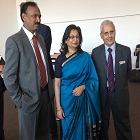
The International Sourcing Expo (ISEA) opened its doors at the Melbourne Convention & Exhibition Centre from November 15 to 17, 2016. The expo offers an extensive array of apparel, textiles, accessories and footwear and is supposed to be the ultimate destination for sourcing, connecting and learning. The three day show kicked off on a strong note.
What’s more, this time, India has sent the largest contingent and the product basket is vast with garments, fashion accessories, handlooms, industrial products, children’s organic garments and so on. The strong pan-India participation includes prominent names like Raymond and BSL Suiting's. The Indian pavilion was inaugurated by Rakesh Malhotra, Consul-Consulate Genreral of India in along with Ajay Sahai, DG & CEO, FIEO and Naval Baveja, Director FIEO a strong business partner to ISEA through the years. In fact, many of the Indian exhibitors at the expo already have a presence in Australia as they are exporting there. Indian apparel and textile exports clocked in good growth last year and trade is in growth trajectory.
Other participating countries are China, Sri Lanka, Bangladesh, Pakistan, Hong Kong, Taiwan, Indonesia, Fiji, Vietnam, New Zealand, Malaysia and more. Also Mauritius and Turkey are participating for the first time in the Expo. Both regions are growing their presence in Australian market and are actively promoting their capabilities.
The Council of Textile and Fashion will be hosting a series of workshops at the expo this year. These will cover a range of valuable industry topics. Traditional artisan and eco-friendly hand woven delicate textiles are being showcased by India. Presented in conjunction with the Handloom Export Promotion Council of India, the event demonstrates first and how these textiles are produced. Visitors can discover possibilities for their business.
Also, the combined event with co located Footwear & Leather Show plus the 16th China Clothing Textile Accessories Expo is introducing over 500 businesses from around the world.
India's positioning in the international market depends upon branding of Indian textile products.
For instance branding of handloom products by involving top designers and retail giants in the country has led to a paradigm shift in the handloom sector.
Many states still do not have a dedicated textile minister. Views and contribution of all states would be reflected in the new textile policy so that India becomes the textile destination of the world.
Various measures have been taken to boost growth and remove bottlenecks and challenges facing the sector. A huge apparel package has been given to the industry. Support would be given for expanding manufacturing capacity and employment generation capacity as only this would address the challenges of industry such as cost of power and labor.
There is a need for more dialogue and convergence between the states and the Center.
A MoU has been signed between IGNOU and The National Institute of Open Schooling to provide free, anytime, anywhere education to children of artisans and weavers.
The textile sector faces challenges, especially in the export market, due to uneven tariff and non-tariff barriers. GST is expected to bring down input costs, give a boost to textile exports and bring in greater capital investment in the sector.

